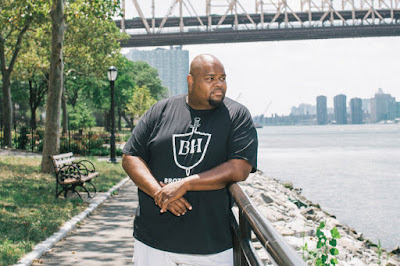Into her 80s, Elizabeth McQueen patrolled Queensbridge Park in Long Island City, Queens, wheeling her walker, a grandson or a great-grandchild at her side, eyes sweeping the walks and lawn. “If someone was barbecuing, she made sure they had garbage bags,” her grandson, Desmen Williams, said. “She had a bin of supplies. A rake if you needed to rake up. She made sure the fire barrels were out there, so you put coals in the barrel when you were done.”
The park is on the eastern bank of the East River, across from the Upper East Side of Manhattan, and Mrs. McQueen lived in the Queensbridge Houses, home to about 7,000 people, the largest public housing development in the country.
“We used to take the kids down to the park,” Dolores Chauncey, her friend and neighbor, said. “She’d say, ‘We’re on one side of the river and the millionaires were on the other, but we have the better view. We can lay in the park and watch the boats go by, and wait for the stars and moon to come out.’ And we did.”
Mrs. Chauncey and Mrs. McQueen met about 40 years ago, another age in New York. The children splashed in a baby pool in the summertime, fished from the rocks when they got older, picnicked at all ages. But along the riverfront, the sea wall, built on a foundation of loose stone called riprap, was falling apart. To keep people away from the hazard, the parks department fenced off the area, including an esplanade. Decay marched on: One of two playgrounds was turned into a parking lot for people working on the Queensboro Bridge. The park house, with its concession stand and changing rooms for the wading pool, was left to the elements. And the pool was drained and filled in, visible only in the mind’s eye.
“It broke her heart that children were playing in a park that they could literally see crumbling into the river,” Councilman Jimmy Van Bramer, a Democrat who represents the area, said. “It wasn’t just about the park, it was about justice. Nowhere in Manhattan would this be allowed to happen.”
Mrs. McQueen reared back and leaned against the universe. In between working as a technician at Polaroid and looking after her grandson, she became a world-class nudge. “She had no problem calling any elected official at any level,” said Chris Hanway, the executive director of the Jacob Riis Neighborhood Settlement House, where Mrs. McQueen served on the board.
And she leaned on nonelected officials, too. “This was a real problem site, and she in the most gracious possible way kept the pressure on,” said Adrian Benepe, the commissioner of the parks department from 2002 to 2012, who noted that the park was not in a fashionable neighborhood likely to attract private funds. She was installed as the park’s warden, a titled volunteer, in recognition of her stature.
With friends and allies in the community and government, she organized Dancing Under the Stars nights, Super Soaker days for water-gun battles, puppet theaters, concerts and more. Battered as it was, the park remained alive and lively.
That was the daily business. In the long term, she wanted New York City to rebuild the sea wall and restore access to the walkway along the water. At least four agencies had dominion over some piece of the park, and yet others had a say in granting permits. For the $7 million cost, Mrs. McQueen chased down elected officials, including Democrats like Mr. Van Bramer; Helen M. Marshall, then the borough president; Representative Carolyn B. Maloney; and Assemblywoman Catherine T. Nolan, as well as the mayor at the time, Michael R. Bloomberg, a Republican turned independent.
About half — $3.65 million — was secured by Mr. Van Bramer through the City Council. “When the grant came in for the sea wall, she came into my house and said, ‘We got it!’” her grandson said. “If she could have done back flips, she would have.”
The esplanade reopened in summer 2014. She was not done. A new park house was needed. “She was right,” Mr. Van Bramer said.
Work will begin in the fall. Mrs. McQueen died in February at age 83.
On Friday, the city, urged on by Mr. Van Bramer, will declare the esplanade along the river to be Elizabeth McQueen Way. It runs atop the rebuilt sea wall, across from Manhattan towers named for corporations and real estate developers, a place where anyone who loves river breezes and moonlit nights can stroll.
“My grandmother did things a lot of people wouldn’t do because they didn’t think it was their job,” Mr. Williams said. “She’s gone. But she’s still winning.”


No hay comentarios:
Publicar un comentario